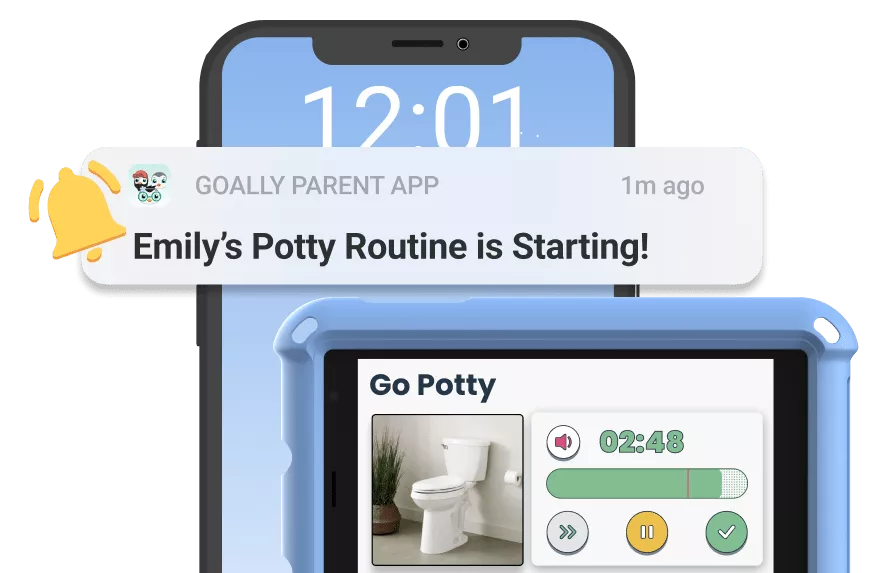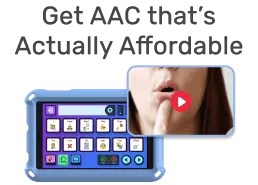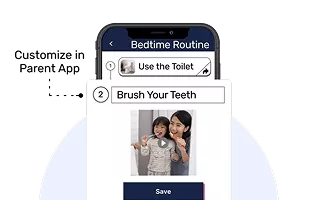Communication challenges are common for many children with autism spectrum disorder (ASD), but with the right strategies, kids can learn to express themselves more clearly and confidently. Whether a child is nonverbal, has limited speech, or struggles with social cues, tailored communication tools can make a big difference. From visual supports to AAC apps and structured routines, these strategies help children communicate and express themselves, build relationships, and reduce frustration. In this guide, we’ll explore effective, evidence-based autism communication strategies that support meaningful interaction at home, in school, and beyond.
Autistic children often process visual information better than spoken words, and simple, direct language helps them to understand. Saying what you mean and being patient also go a long way to better communication. Let’s take a look at how all of these techniques!
Table of Contents
Use Visuals
Incorporating autism communication strategies can greatly enhance your interactions with your child. Visual aids, such as pictures, symbols, and social stories, offer a tangible way to bridge the understanding gap. By utilizing picture cues, you can make instructions and expectations clearer and more accessible. Visual schedules provide structure and predictability, reducing anxiety and facilitating smoother transitions. Implementing these strategies not only improves communication but also empowers your child with the tools they need for increased independence in their daily life. By creating a supportive environment that caters to their unique communication needs, you can foster meaningful connections and help your child thrive.
| Autism Communication Strategies |
|---|
| 1. Visual aids: Use pictures, symbols, or social stories to provide concrete representation and aid understanding. |
| 2. Picture cues: Show visuals of specific tasks or expectations to enhance comprehension. For instance, use a picture of a toy box to convey the instruction of cleaning up toys. |
| 3. Visual schedules: Create schedules with visual cues to establish routines and reduce anxiety by providing structure and predictability. |
| 4. Increased independence: Implementing these strategies empowers your autistic child with the tools they need for improved communication and increased independence in daily life. |
Build Custom Printable Visual Schedules
Is your child having trouble managing their routines? Here’s a free visual schedule builder. Goally’s custom tool allows you to create printable personalized schedules that motivate your child to focus on their tasks. Perfect for morning, homework, and bedtime routines, this free visual schedule builder is easy to use and will help your child reach their full potential.
Click below to make your CUSTOM printable visual schedule! 👇
Use Short, Simple Language
When communicating with an autistic child, it’s important to use clear and concise language. Using complex language or figurative language can cause confusion and misunderstandings for your child.
Simplifying sentences and using short phrases can make it easier for your child to understand what you’re saying. For example, instead of saying, “Please go upstairs and get ready for bed,” try saying, “Upstairs now, time for bed.”
Read More: Speech and Language Sample
Using your child’s name when speaking to them can also help keep their attention focused on the conversation. Making eye contact while speaking conveys that you are engaged in the conversation and helps build a connection between you and your child.
By using short, simple language, parents can create a more effective communication style with their autistic children.
Say What You Mean
When communicating with an autistic child, it’s important to understand that misunderstandings can arise due to information processing difficulties. To foster effective communication, follow these strategies:
- Be direct and specific: Avoid vague instructions and instead provide clear and specific steps. For instance, rather than saying “clean up your room,” break it down into manageable tasks like “pick up toys from the floor” or “fold clothes on the dresser.” This clarity helps prevent confusion and frustration.
- Use rephrased instructions: Sometimes, common phrases or instructions may need to be rephrased to ensure clarity. For example, instead of saying “Stop making noise,” try saying “Use quiet voices, please.” By using language that is explicit and precise, you enhance understanding and promote effective communication.
By implementing these autism communication strategies, we demonstrate our love and build trust with our children. Remember, being direct and specific in our communication fosters a stronger connection and supports the unique communication needs of autistic individuals.
Be Patient
Learning effective communication with an autistic child takes time and patience. It’s important for parents to remember that their child may need extra processing time or may communicate differently than what they’re used to.
When having a conversation, it’s important to give your child ample processing time and wait patiently for their response. Avoid cutting them off mid-sentence or rushing the conversation along.
Read more: How to Teach Child to Use Visual Schedule
It’s also important to celebrate small victories in communication, no matter how small they may seem. Recognize when your child is making progress and show them praise for their efforts.
By being patient and celebrating small victories, parents can create a positive environment that encourages improved communication with their autistic child.
Tips for Parents
When it comes to communicating with your autistic child, it’s essential to build a supportive network of friends, family, and educators who understand their unique needs. Here are some helpful strategies to foster effective communication:
- Create a communication guide: Develop a cheat sheet or guide that can be shared with those who regularly interact with your child. Include details about the language and communication methods that work best for them, specific visual aids or routines they respond well to, and any other important information about their unique needs.
- Practice together: Encourage everyone involved in your child’s life to practice new communication strategies together. This can include using visual aids, employing specific language techniques, or implementing consistent routines. By practicing together, you ensure a unified and supportive approach to communication.
By educating those around us about our children and their specific communication needs, we can establish collaborative relationships that make life easier for everyone involved. Remember, effective communication is a key component in creating a nurturing and understanding environment for our autistic children.

Goally | Teach Kids AAC & Core Words
Is your child facing challenges in expressing themselves or communicating effectively? Goally’s language apps support their journey in building essential communication skills! All of these apps are included our skill-building tablet made for kids.
The Word Lab and AAC Talker apps provide a simple, engaging platform for your child to learn core words and become a functional communicator right from the start. Customize the experience with a voice that suits them, and watch as their confidence grows in expressing their thoughts and needs!
But we don’t stop there. Our Balloon App helps build the skills needed to use AAC by engaging your child with fun, interactive “pop the balloons” exercises. It’s a game-changer for kids who need that extra boost in communication.
Every child with autism communicates in their own unique way—and with the right support, they can build stronger connections with the world around them. Whether it’s through visual aids, AAC tools, or consistent routines, these communication strategies help children with autism spectrum disorder express their thoughts, needs, and emotions more effectively. By using approaches that match your child’s strengths, you can reduce frustration, support emotional growth, and foster greater independence. With time, patience, and the right tools, meaningful communication is possible for every child.
FAQ’s About Autism Communication Strategies
What are the best communication strategies for nonverbal autistic children?
Visual schedules, AAC apps, and picture exchange systems are highly effective.
Can communication improve over time in autistic children?
Yes, with consistent support and the right tools, many children make strong progress.
Are AAC devices only for nonverbal kids?
No, AAC can help both nonverbal and verbal children express themselves more clearly.
How do I know which communication method is right for my child?
A speech-language pathologist can assess your child and recommend personalized tools.
Emily is a seasoned blog writer for Goally, leveraging her extensive background in child psychology and special education to provide valuable insights and resources for parents. Her commitment to understanding and addressing the unique needs of these children, combined with her expertise in educational strategies, makes her a credible and empathetic voice for families.





